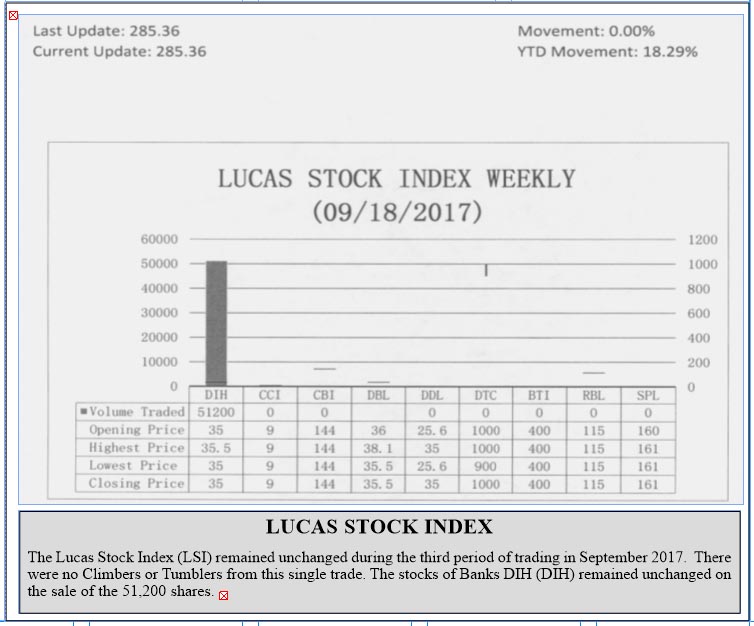Extreme damage
The extreme damage and swath of devastation that have occurred over the past weeks have left many wondering as to what is really happening with global warming and climate change. It is probably the first time in a while that there has been a chain of catastrophic hurricane events in the Latin American and Carib-bean Region in such a short time span. Some conclude that global warming is to be blame; the religious  folk conclude that these disasters are a sign of the end times as prophesied in the Book of Revelations. Whichever it is does not matter, since people are dealing with decisions of survival. Within a matter of weeks, there have been two ‘monster’ storms ‒ Hurricane Irma and Hurricane Maria ‒ that ripped through several Caribbean islands, leaving many of the once lush islands almost brown and barren. Also, not forgetting Hurricane Harvey, the first to begin this month’s tale of disaster and the two earthquakes that rocked Mexico, resulting in numerous deaths and much devastation to that country. The economic and environmental impact of these hurricanes on the small Caribbean islands is far reaching, with the devastation estimated to be in the billions of dollars.
folk conclude that these disasters are a sign of the end times as prophesied in the Book of Revelations. Whichever it is does not matter, since people are dealing with decisions of survival. Within a matter of weeks, there have been two ‘monster’ storms ‒ Hurricane Irma and Hurricane Maria ‒ that ripped through several Caribbean islands, leaving many of the once lush islands almost brown and barren. Also, not forgetting Hurricane Harvey, the first to begin this month’s tale of disaster and the two earthquakes that rocked Mexico, resulting in numerous deaths and much devastation to that country. The economic and environmental impact of these hurricanes on the small Caribbean islands is far reaching, with the devastation estimated to be in the billions of dollars.
These islands, though with a comparatively higher GDP than that of Guyana, find themselves incapacitated by the destructive power of the hurricane. For some of these countries, managing day-to-day life was already challenging. Now to rebuild and regain growth becomes even more difficult. Guyana has offered to help its Caricom partners and has committed assistance to these islands. But, what if other strategies could be utilized to assist in disaster relief efforts? Guyana’s response like those of others remains a short-term solution to events that will continue to occur overtime. The short-term responses should be coupled with longer term strategies to cope with disastrous hurricanes. This week’s article seeks to explore what else might be possible beyond the short-term remedies for dealing with disaster.

